Preauricular sinus is a congenital condition characterized by a small opening or pit near the front of the ear. While it may remain asymptomatic, some individuals experience recurrent infections or abscess formation, necessitating surgical intervention. This blog discusses the surgery for pre auricular sinus (both infected and non- infected) done by an ENT doctor in Palawan.

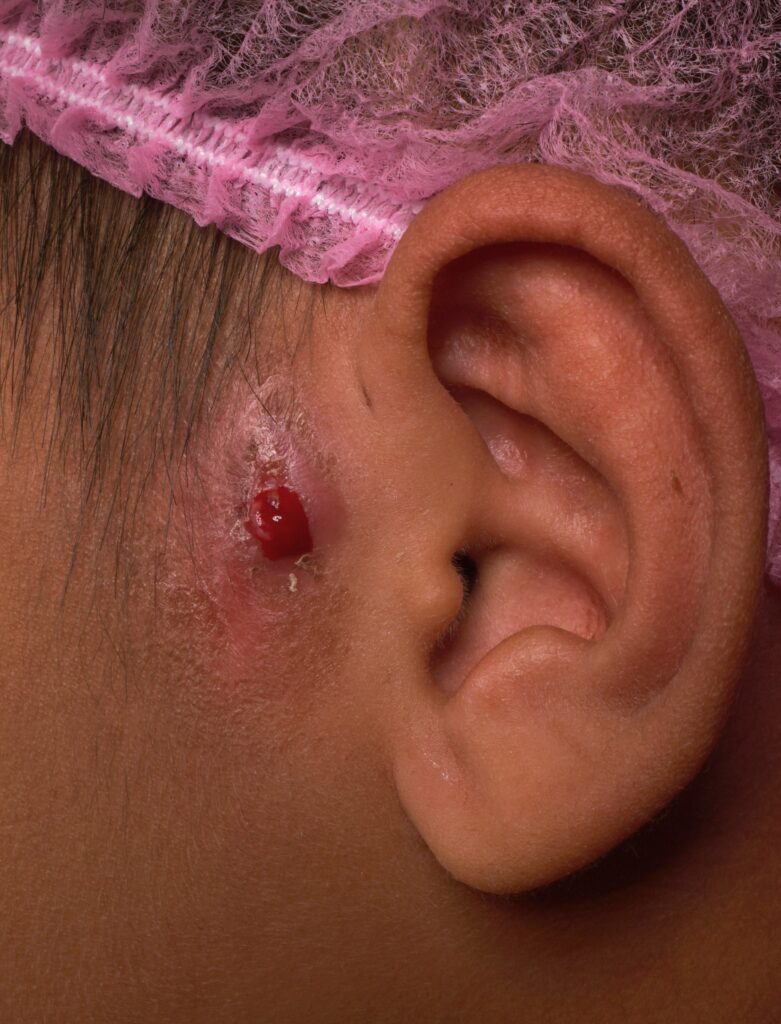
IMAGE: Comparison of a non- infected (right ear, pic on the left) and infected (left ear, pic on the right) pre auricular sinus in a 7 year old child..
Indications for Surgery: When and Why It's Necessary
Surgery for preauricular sinus is typically recommended by an ENT surgeon when conservative management fails or complications arise. Key indications include recurrent infections, persistent drainage, and abscess formation. Chronic inflammation and pain also drive the need for surgical intervention. Surgery offers definitive treatment, reducing the risk of repeated infections, frequent antibiotic intake, and improving the patient’s quality of life.
Surgery for Pre-Auricular Sinus

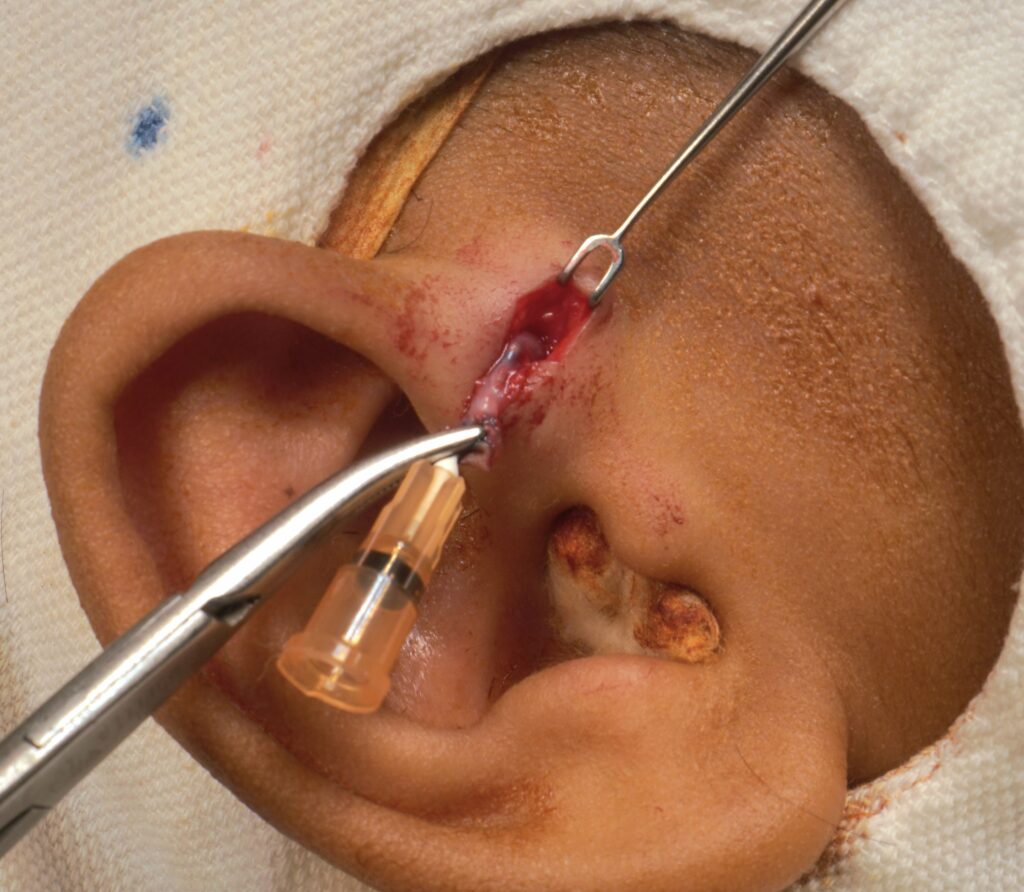
The surgical procedure for preauricular sinus excision begins with an ENT doctor administering local or general anesthesia. The surgeon then makes an incision around the sinus opening, carefully dissecting and removing the sinus tract.
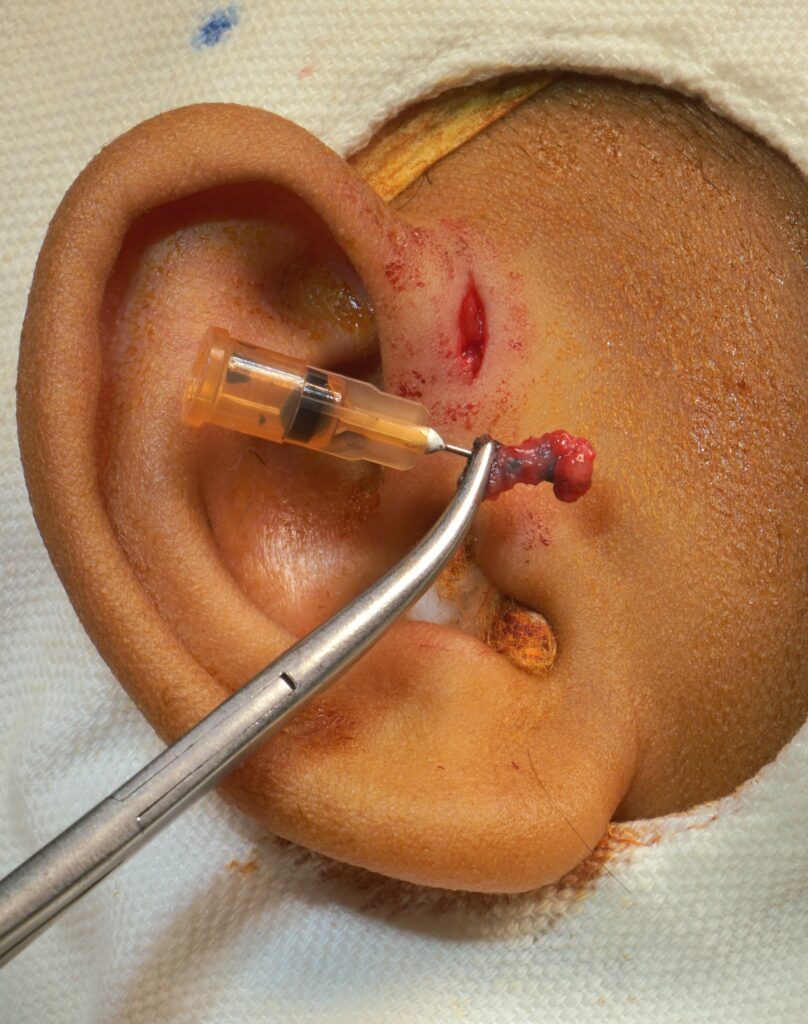
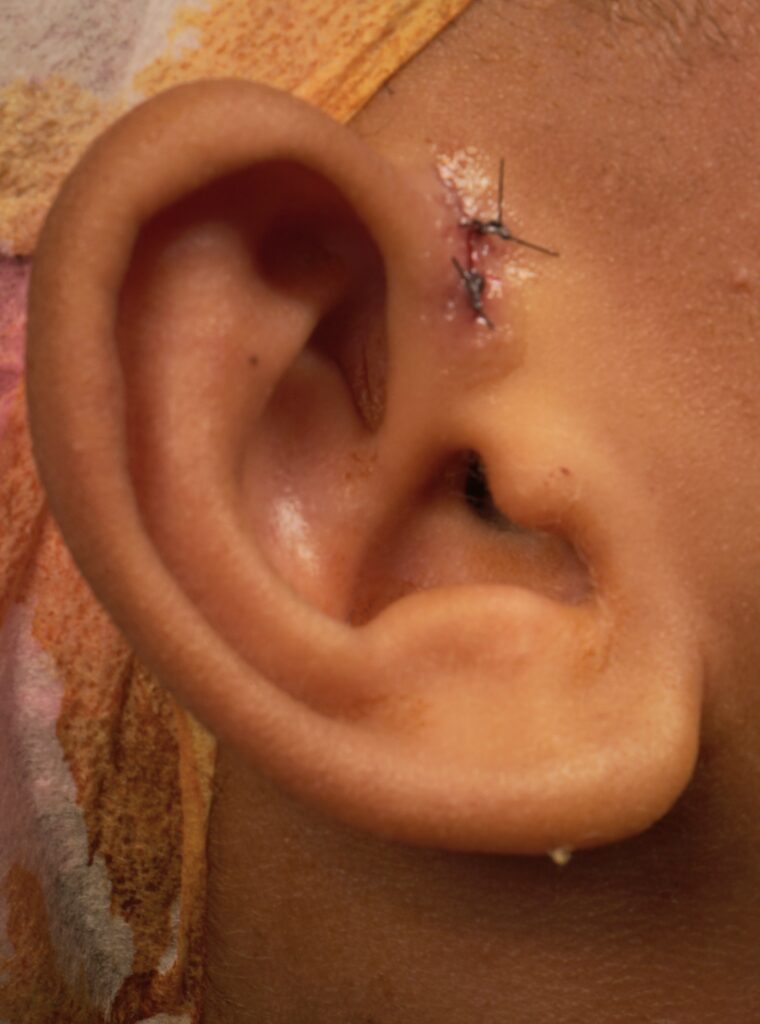
In the patient above, the ENT surgeon in Palawan used a blue dye as a guide to visualize the extent of the preauricular sinus. This is important so that the whole sinus tract is excised. Any remnant tract may result in a re-infection.
The blue dye was injected using a blunted needle into the hole of the sac. Using a mix of sharp and blunt dissection, the whole tract was excised and the incision was sutured.
Surgery for Infected Pre-auricular Sinus

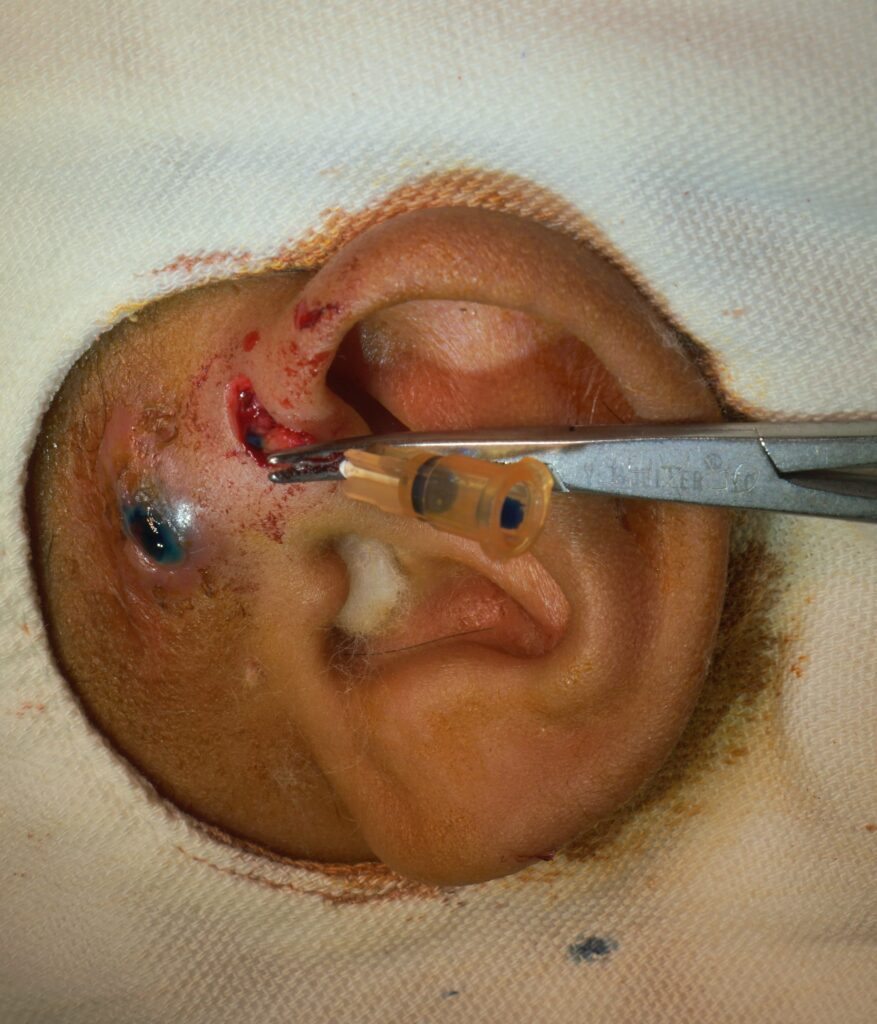
Compared to a surgery for a non-infected pre auricular sinus, antibiotic treatment is started for a few days prior to surgery for infected pre-auricular sinus. This is important so that the surgical site will not get infected.
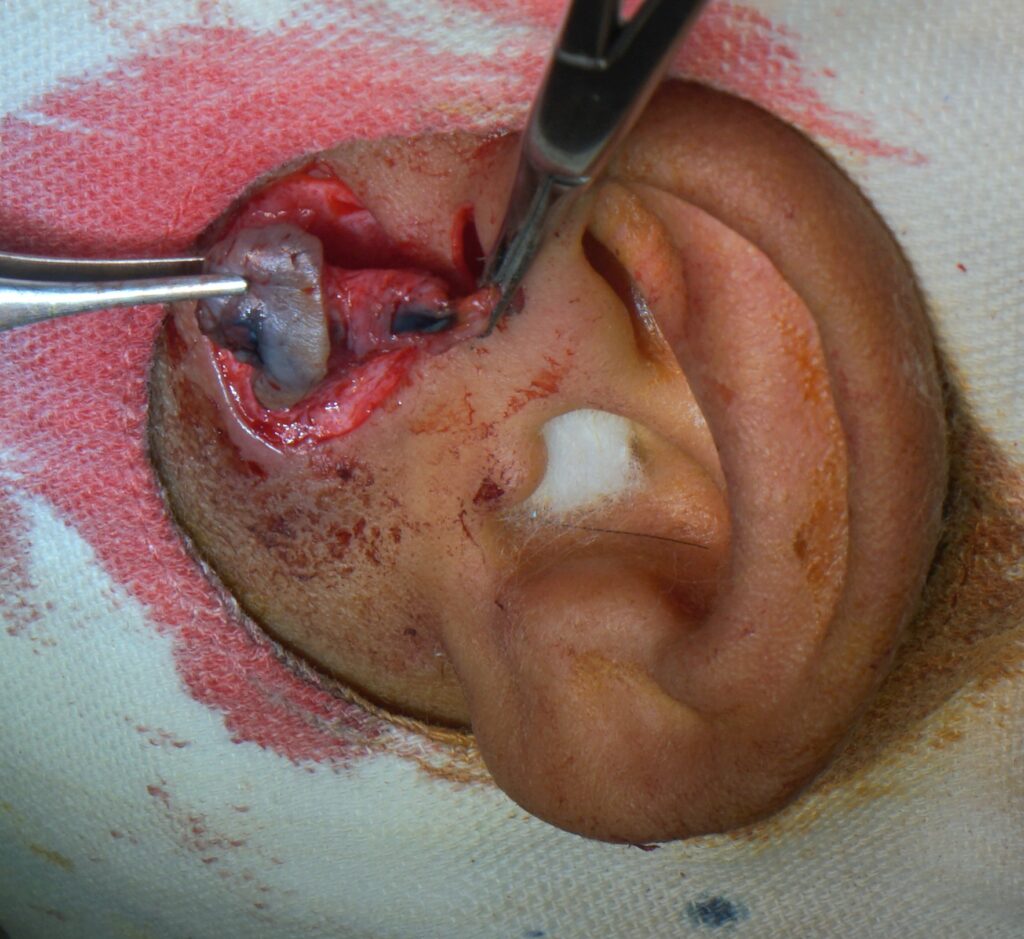
Surgery starts with identifying the extent of the sinus tract using injected dye. In the pictures, it can be noted that the dye has extended to the infected overlying skin.
The ENT surgeon in Palawan preferred to create 2 incisions, one for the sinus tract opening, and a separate one for the infected skin.
Curettage of the structures under the infected skin and subcutaneous tissue was also done up to the level of healthy tissues. This is to ensure that no infection or granulation tissue is left in the surgical site.
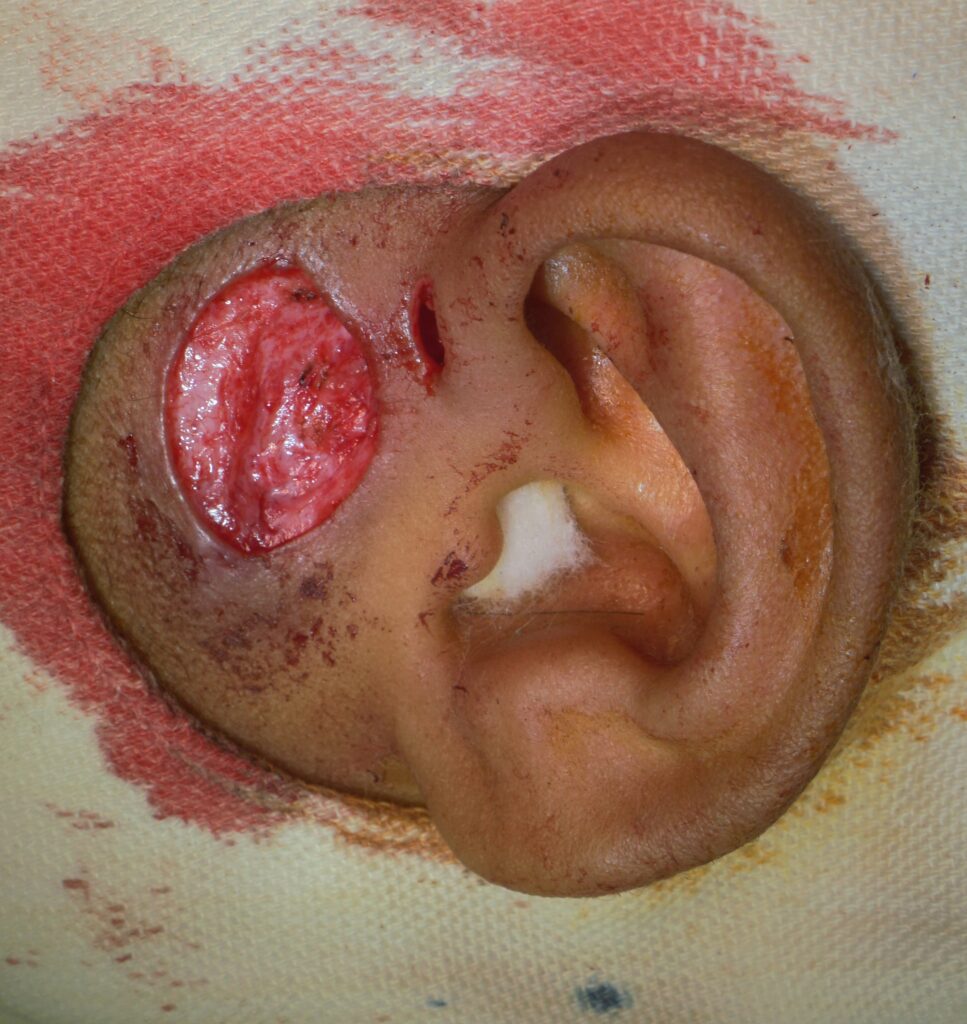
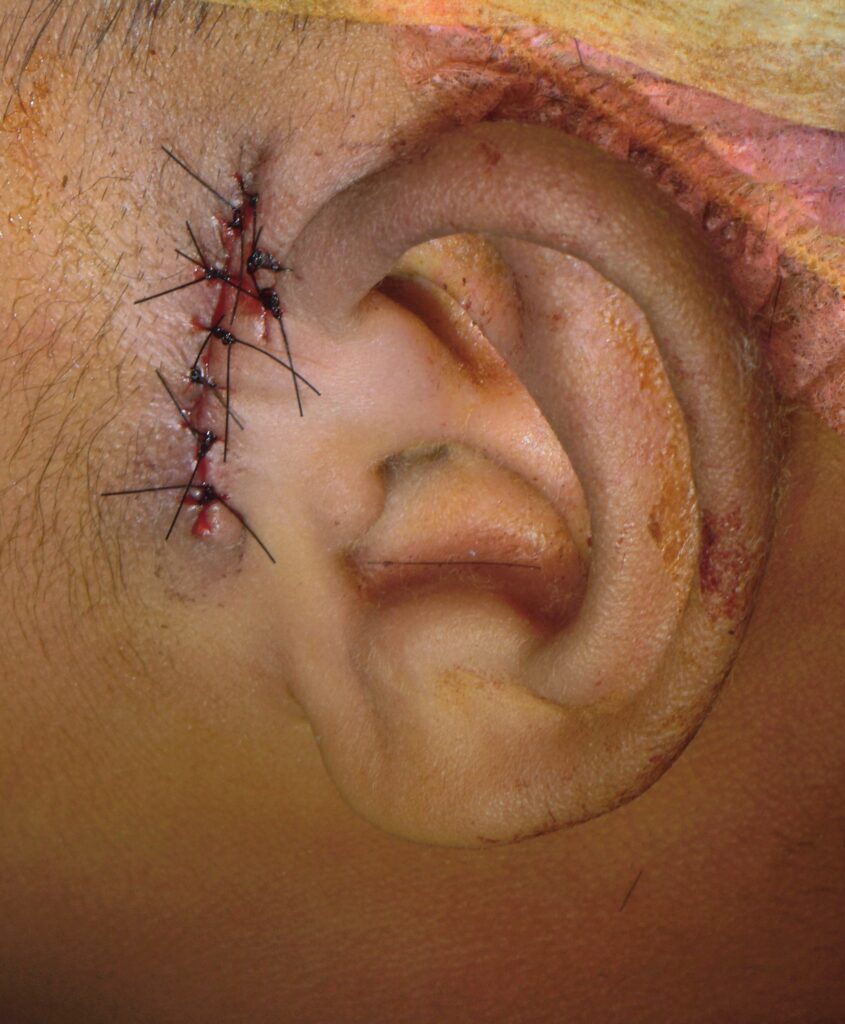
After removal of all infected tissue, a large defect may remain. The ENT surgeon in Palawan moved tissue around to close the large defect to end up with an aesthetically pleasing post- operative wound.
Postoperative Care and Management
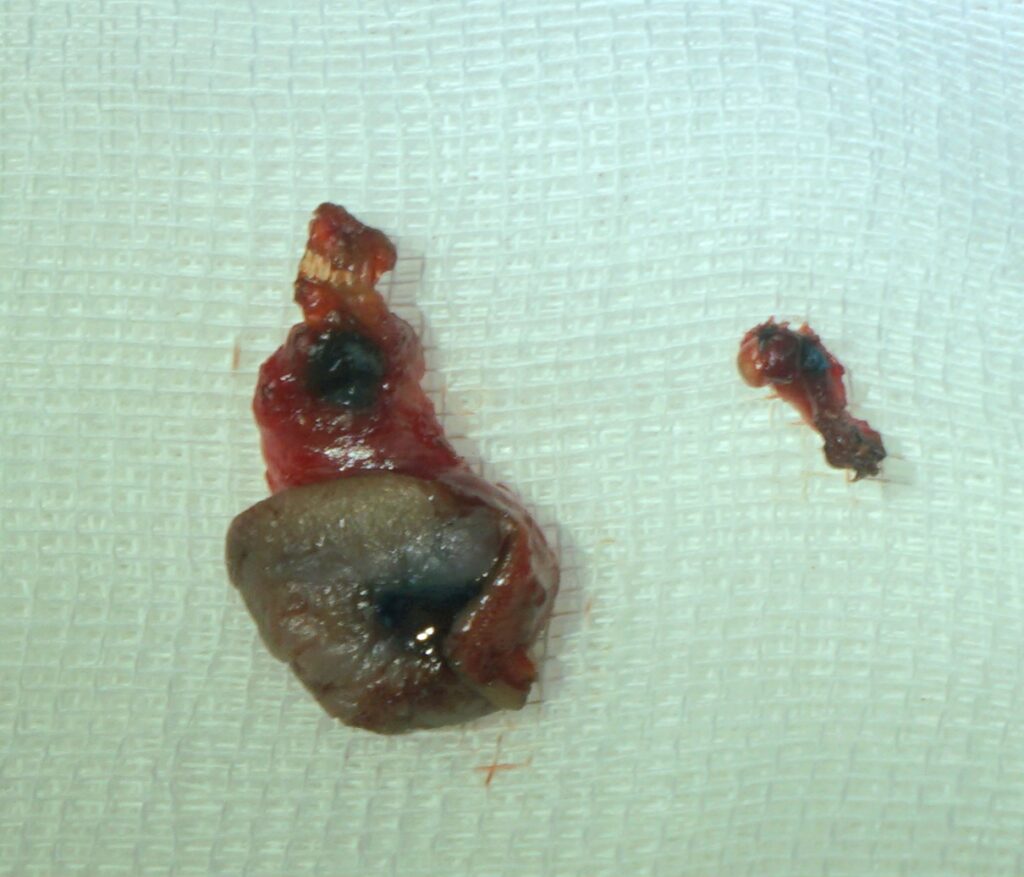
Postoperative care under the guidance of an ENT doctor is crucial for optimal recovery and involves several key steps. Immediately after surgery, patients are monitored for any signs of complications. Pain management includes prescribed analgesics, and antibiotics may be administered to prevent infection.
Patients are advised to keep the surgical site clean and dry, follow wound care instructions, and avoid strenuous activities. Follow-up visits with the ENT doctor are scheduled to monitor healing and address any concerns promptly.
Surgical intervention for preauricular sinus, done by an experienced ENT doctor, offers a definitive solution to the challenges posed by this congenital condition. Understanding the indications, surgical techniques, and postoperative care involved in the surgery can empower patients and caregivers to make informed decisions and ensure optimal outcomes. With proper management by an ENT doctor, individuals can achieve significant relief from an infected pre-auricular sinus and improve their quality of life.
Experience expert ENT surgical care tailored to your needs.
Book now to schedule your appointment with a skilled ENT surgeon near you and take the first step towards a healthier you.
Your well-being is our top priority.

